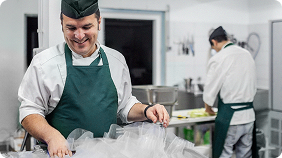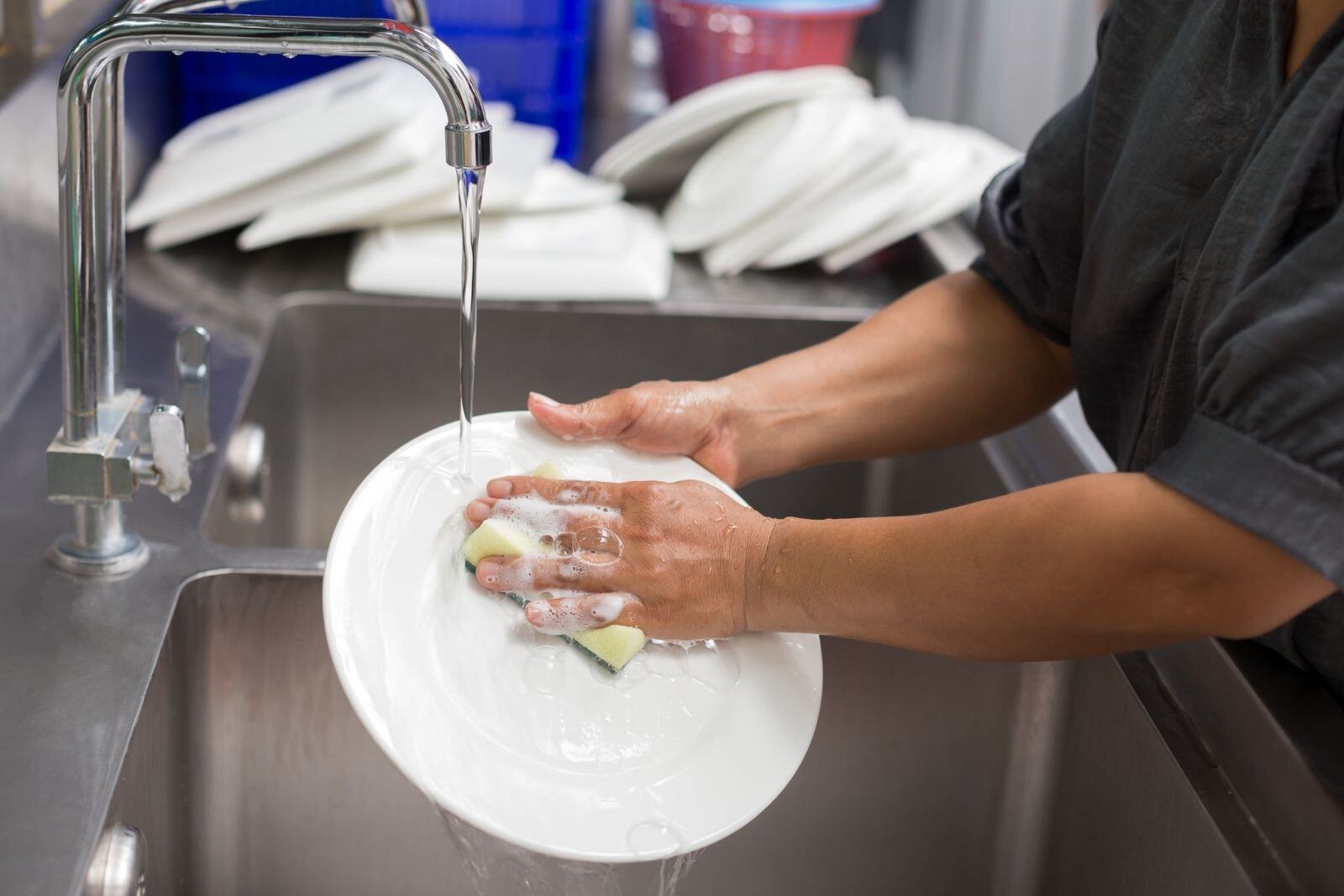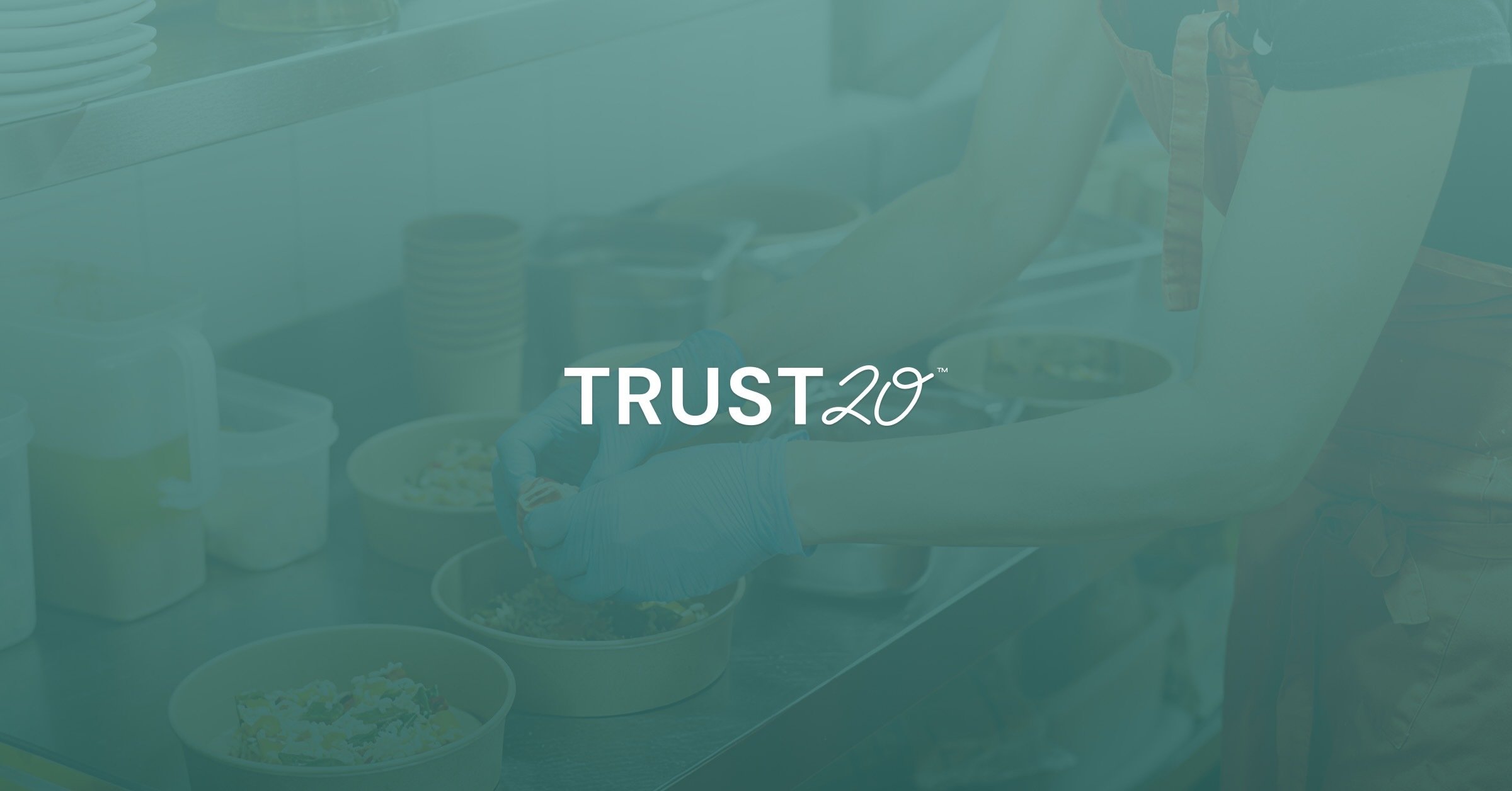"Everything but the kitchen sink" is a common phrase. But in the foodservice world, the kitchen sink is everything.
When it comes to food safety, your dishwashing process is one of the most critical steps in protecting your customers and your business. A clean, sanitized dish isn’t just about presentation, but about preventing the spread of harmful pathogens that can cause foodborne illnesses.
While commercial dishwashers have revolutionized the industry, the three-compartment sink method remains a tried-and-true process that every foodservice team should master.
Whether you’re dealing with a dishwasher breakdown or simply following tradition, this method ensures every plate, utensil, and food-contact surface is cleaned and sanitized to perfection.
To start with a general definition, foodservice teams can use two primary dishwashing methods: the automatic method, in which a commercial dishwasher cleans dishware, and the manual three-compartment sink method, in which team members clean and sanitize dishware manually.
Nowadays, commercial dishwashers are common in many food industry establishments, helping streamline the dishwashing process. Still, the three-compartment sink method remains a tried-and-true option.
Not only is the three-compartment sink method a traditional dishwashing process that is a great alternative to commercial dishwashers (especially if a dishwasher is out of order or otherwise unavailable), it allows teams to ensure all dishware has been properly cleaned and sanitized.
Below, we’ll cover:
What is the three-compartment sink method?
What is the three-compartment sink order?
What are the steps in the three-compartment sink method?
What is the three-compartment sink method?
The three-compartment sink method is simple: it’s a manual commercial dishwashing process. This method involves much more than simply using soap and water to wash dishware and utensils. Just like in a commercial dishwasher, sanitization is a key part of the method—just as much as the actual step of cleaning is.
In every foodservice kitchen, a sink with at least three compartments is required by the Food and Drug Administration (FDA) to be provided for the manual washing of dishware, equipment, and utensils.1
As is clear by the method's name, these three separate sinks are used for each step of the dishwashing process: washing, rinsing, and sanitizing.
What is the three-compartment sink order?
Though the name of the process is the three-compartment sink method, there are actually five main steps. Not every step occurs in one of the three sinks (e.g., removing food from dishware).
For ease of reading, the five steps are as follows:
-
Clear food remnants.
-
Washing.
-
Rinsing.
-
Sanitizing.
-
Air drying.
It's important to follow these steps in order to ensure a team properly cleans and sanitizes dishes, cutlery, and other dishware and food-contact surfaces. This will reduce cross-contamination from dirty cooking tools and dishes that have been in contact with people, food, and other contaminated surfaces.
An estimated 48 million cases of foodborne illnesses occur each year.2 Cleaning alone isn’t enough to reduce cross-contamination and prevent foodborne illnesses, so the three-compartment sink order is critical.
What are the steps to the three-compartment sink method?
Let’s take a close look at each of the five steps to the three-compartment sink method.
Clear food remnants
Before any dishware enters the first sink, you must scrape off all leftover food remnants.
Wash
Washing happens in the first sink. All dishware and utensils should be scrubbed thoroughly with warm water and soap/detergent to remove any dirt, germs, and impurities from their surfaces.
Rinse
Use the second sink to rinse dishes, utensils, and cups in clean, warm water. Do not use soap, detergent, or other cleaning products in this sink. Rinsing the clean dishware removes soap residue, which can prevent sanitizer from effectively killing germs in the next step.
Sanitize
The third and final sink sanitizes the now-cleaned and rinsed dishware. Sanitizing is essential to creating and maintaining a safe food-handling environment and is a key step in this method.
To properly sanitize, you’ll need to follow the directions of the EPA-registered chemical sanitizing solution to prep the sink—this will tell you how long dishes need to soak and how hot the water needs to be.
Alternatively, you can use the hot water sanitation method, which requires no sanitizing solutions. As per the FDA Food Code, the water temperature must be maintained at 171 degrees Fahrenheit or above.
Pro tip? Consider using a timer to make sure your dishes have soaked in sanitizer for the recommended duration.
Air drying
The last step is air drying. Be sure not to rinse the dishware following sanitization and never towel-dry them. Towel drying can cause contamination to the dishware and utensils, and then you’ll need to begin the dishwashing process all over again.
Air dry all dishware on a drainboard or rack.
FAQ
How hot should the water be in a 3-compartment sink?
The water temperature in the washing sink should be at least 110°F to effectively remove grease, food particles, and other debris. For the sanitizing sink, the temperature depends on the method used:
- If using a chemical sanitizer, follow the manufacturer’s instructions for the required temperature.
- If using hot water sanitization, the water must be maintained at 171°F or higher.
What are the FDA requirements for a 3-compartment sink?
The FDA requires that every foodservice establishment have a sink with at least three compartments for manual dishwashing. Each compartment must be designated for a specific step: washing, rinsing, and sanitizing. Also, the sink must be large enough to fully submerge the largest piece of dishware or equipment used in the kitchen. Drainboards or racks must also be provided for air drying.
Which activity is not allowed in a 3-compartment sink?
Activities like handwashing, food preparation, or thawing frozen food are not allowed in a 3-compartment sink. These sinks are strictly designated for cleaning, rinsing, and sanitizing dishware, utensils, and food-contact surfaces to prevent cross-contamination.
At what temperature does water sanitize dishes?
Water sanitizes dishes at a temperature of 171°F or higher when using the hot water sanitization method. If using a chemical sanitizer, the water temperature will vary based on the product, but it is typically between 75°F and 120°F. Always refer to the sanitizer’s label for specific instructions.
Sanitize and wash your dishes with a tried and true method
Proper cleaning and sanitizing during the dishwashing process is critical to ensuring dishes, cutlery, and cooking utensils are ready for use again—either by your team during food prep or by customers.
The three-compartment sink method is a reliable and effective way to make sure all dishware has been appropriately cleaned and sanitized with an FDA-approved process.
But why stop there? Take your food safety game to the next level with Trust20’s food safety training products. Whether you’re a seasoned pro or just starting out, our training programs are packed with practical tips, expert insights, and everything you need to create a safer, more efficient kitchen.
Don’t just meet food safety standards. Exceed them. Explore Trust20’s training today and give your team (not just your sink!) the tools they need to shine.
Sources:






.png)

.png)
